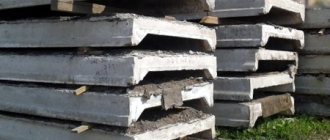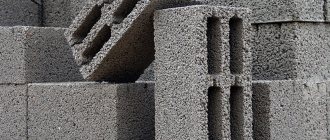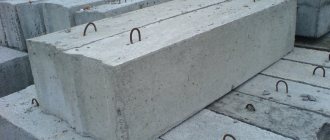Nice European trio. Or Chinese?
It is no secret that the pioneer in the creation of concrete pumps was the Schwing , which released its first oil-hydraulic concrete pump in 1957. The following year, a trailed concrete pump on a wheeled chassis was introduced, and three years later it was already equipped with a distribution mast. Since 1973, the company has launched serial production of a concrete pump with a 45-meter distribution mast. In the early 1980s. A merger took place with Stetter, and the renewed company became the largest manufacturer of concrete mixer trucks. Today, a controlling stake in the company belongs to the Chinese concern XCMG , but concrete feeding equipment is still produced under the name Schwing-Stetter and at the same production facilities.
Among the large number of models, there is also equipment for supplying concrete in confined spaces and even in the presence of obstacles. This is exactly what the S 38 SX Reptor brand truck-mounted concrete pump is, which can be installed on several types of chassis. When mounted on a 6x4 chassis, the payload is reduced to 26 tons, while maintaining high mobility and maneuverability. If you want to reduce costs, it is recommended to install the concrete pump on an 8x4 chassis with a long wheelbase, on which a P2525 pump battery with 2.5 m lifting cylinders is mounted. This design allows you to reduce the number of strokes by 20%. For example: with a productivity of 60 m3/h, the pump battery makes only 8 strokes per minute.
The wear-resistant skirt-shaped gate, the same as on other Schwing models, creates low frictional resistance to the flow of the concrete mixture, and thanks to its simple shape it is easier to clean. The gate provides access to the discharge cylinder pipe and the discharge piston, thanks to which the pump battery can be cleaned in just two strokes, which means that the concrete pump can be prepared for operation faster, and without wasting water. Economical engine operation below 1000 rpm combined with an open center hydraulic system provides high performance and significantly reduces equipment wear. The Easyflex support system adds stability in difficult working conditions. For safe operation, the operator has an intuitive Vector control panel or a remote control with a charge reserve of 8 hours of operation for precise guidance of the concrete pump boom.
From stationary concrete pumps Schwing mod. SP 1800 is one of the most popular among builders due to its high reliability and good performance characteristics. The power of the hydraulic pump is adjustable; during operation, the operator can manually specify the desired number of strokes and flow rate, which protects the drive motor from overloads. To achieve maximum productivity of 73 m3/h, the concrete pump requires only 24 strokes per minute, which is 15% less than equipment from other manufacturers. The equipment is easily transported around the construction site on a single-axle trailer. The heart of the concrete pump is a diesel engine with a power of up to 152 hp, depending on the modification. With. The working pressure when supplying concrete mortar reaches values from 56 to 101 bar. This makes it possible to pump mortar up to a height of up to 180 m and horizontally up to 500 m, making the Schwing SP 1800 particularly suitable for multi-storey construction.
CIFA company in Italy to produce a concrete mixer in 1958, and the first concrete pump in 1965. By 1975, the world's first truck-mounted concrete pump with a Magnum mixer was developed, which immediately made the company a world leader. In 1998, the company produced the largest concrete pump with a boom lift of 52 m. In 2008, CIFA was acquired by the global Chinese concern Zoomlion. Today the company offers equipment for transporting concrete under the ZOOMLION-CIFA brand. The equipment line includes stationary and truck-mounted concrete pumps.
For the 90th anniversary of the company, a special version of the concrete pump on a car chassis was released - mod. K47H. The limited edition cars feature a three-tone paint scheme of matte grey, orange and black, as well as a plate with the serial number and the company's 90th anniversary logo. Mounted on an 8x4 chassis, this pump is part of the Carbotech series, in which the last two boom sections are made of carbon fiber. The maximum productivity is 140 m3/h, the distribution boom is five-section, 47 m long.
Smartronic GOLD machine control system with improved stability control for increased work safety, especially important when outriggers cannot be fully extended. The fully removable pump group ensures efficient pumping of a variety of concrete types and aggregate sizes, reducing the number of cycles per minute for the same payload, ensuring low wear and long machine life.
Of the stationary models, PC 307 is the smallest in the line, but has proven itself on construction sites around the world. The equipment is mounted on a single-axle trailer with a drawbar, with four adjustable supports. The engine is diesel from Deutz or Perkins; it is also possible to install an electric motor. The main pump is an axial piston type with variable displacement and constant power. The pumping station creates a smooth, continuous flow and ensures efficient pumping of different types of concrete with aggregates of all sizes, with fewer cycles per minute while maintaining the same flow rate. This solution guarantees less wear and extends the service life of the concrete pump. The productivity is 30 m3/h, the hopper capacity is 300 liters. The supply of concrete mixture is possible at a distance of 500 m horizontally and up to 120 m in height. Low noise level allows you to work in dense urban areas.
In 1968, the company's first truck-mounted concrete pump was released under the Putzmeister , and just a year later their market share of truck-mounted concrete pumps was already 45%. The model range included pumps with boom lengths from 11 to 25 m, and the productivity of the concrete pumping unit reached 125 m3/h. Today, Putzmeister employs more than 3,000 people in 20 divisions around the world with an extensive dealer network in 154 countries. Since 2012, the company has become part of the Chinese Sany, but, as many years ago, under the Putzmeister brand, customers are offered a wide range of concrete supply equipment.
The new BSF 42-5.16H truck-mounted concrete pump is proof of the consistent quality and constant innovative developments. The new product can be described in just a few words: lightweight, productive, with a boom higher than 36 m. A modern concrete pump on a vehicle chassis is distinguished by its dimensions, which do not exceed current standards for size, weight and axle loads for movement on public roads. The total weight of the Putzmeister BSF 42-5.16H pump is 29,260 kg, the axle load is up to 10 tons, the productivity is 160 m3/h.
An optimally selected ratio of the geometry of feed cylinders, pistons, performance and pressure on the mixture reduces fuel consumption and increases environmental friendliness and safety of work. There is a whole scattering of electronic control systems, including the EPS pumping control system and the SN gate switching control system. The EGD graphic display with self-diagnosis function warns the operator of possible malfunctions, the PushOver system prevents the occurrence of pressure peaks that affect the rate of wear, thanks to which the concrete pump lasts longer with less wear, which means it is cheaper to maintain and more profitable to operate.
The boom is made from high-strength steel and its design, combined with supports and OSS to help install the pump in tight spaces, makes it easy to position the pump even on narrow city streets. The sleeper chassis cab will please the operator, as will the Webasto engine and cab auxiliary heater. The “cherry on the cake” will be a double-layer concrete pipeline, a high-pressure washer and a winter hydraulic accumulator, supplied as standard.
Among the best-selling stationary concrete pumps from Putzmeister mod. BSA 1409 D. The equipment is powered by a powerful 190 hp Deutz diesel engine. With. Assistance in pumping the concrete mixture is provided by a direct-flow hydraulic system. The feeding hydraulic pump, which develops a pressure on the mixture of up to 106 bar, allows you to receive and supply concrete horizontally from 400 to 950 m, depending on the mobility of the mixture. In height, such a pump is capable of delivering concrete to the level of the 30th floor. It can pump up to 50 liters of mixture per minute. The BSA 1409 D is equipped with an equally powerful piston pump with falling cylinders. A water reservoir is located between the driving and falling cylinders. The functions of the reservoir include cleaning the pistons and cooling the rods. The built-in electronic control system allows you to monitor the quality of operation of the pump unit, displaying information on the display located on the device body.
Main components of the system
Concrete pipeline installation.
The concrete pipeline consists of solid steel pipes made of corrosion-resistant metal. Lever locks connect pipes. If the pipeline laying section is straight, straight links are used, if there are bends, knee links are used. Using a connecting pipe, the beginning of the concrete transportation system is mounted to the concrete pump through its outlet flange.
A needle valve is attached to the concrete pipeline. It stops the solution if the installation is stopped. The valve is installed before the pipeline bend. The concrete pipeline has a quick-release section for disconnecting the pipeline if necessary. The presence of this section significantly reduces labor costs and repair time. The concrete pipeline also has specialized cleaning devices.
Return to contents
Russian market participant
Among domestic manufacturers of concrete pumps, the leadership belongs to PJSC Tuymazinsky Concrete Truck Plant . The range of truck-mounted concrete pumps of the domestic manufacturer includes TZA models with distribution booms of short length up to 32 m and jointly developed TZA-LIEBHERR technology with distribution booms of longer length, up to 47 m.
The popular Tuymaza model on a car chassis, ABN-37, is equipped with a Liebherr pump, which ensures trouble-free operation of all working equipment as a whole, and also increases the service life of the hydraulic system. The same pump blocks are installed on truck-mounted concrete pumps from leading European companies; the productivity is increased to 120 m3/h compared to conventional TZA pumps. The concrete pump is compact in size, highly maneuverable, and easy to operate and maintain. In addition, the ABN, with its small mass, passes weight control posts without problems, since it has a load of less than 8 tons per axle. Control is carried out from a stationary remote control installed on the concrete pump; a remote remote control is also provided. The concrete mixture is supplied through a straight movable concrete pipeline: horizontally to a distance of up to 450 m, vertically to a height of 60–95 m. The ABN-37 truck-mounted concrete pump can operate at ambient temperatures down to –15 °C.
The line of stationary concrete pumps from TZA is represented by two series with electric and diesel drive with a capacity of 20 to 70 m3/h. They can be distinguished by the index in the model name, the letter E indicates an electro-hydraulic type of drive from a 380 V network, and the letter D indicates a hydromechanical drive from an autonomous engine of the D-242 brand. Stationary concrete pumps with a capacity of 20 m3/h have a hopper volume of 0.45 m3. The concrete mixture is supplied horizontally to a distance of up to 340 m, and vertically up to 40 m. The hydraulic system is equipped with hydraulic accumulators and concrete transport sleeves made in Europe. The concrete pump group is equipped with an S-gate for supplying concrete mixture. The standard configuration includes 2600 mm long concrete pipe links, a total length of 125 m, with 48 couplings, five 90° elbows and one end flexible hose 4 m long.
For more than half a century, concrete pumps, combining all the best from other methods of transporting concrete mixture, have been indispensable assistants on the construction site. Transporting concrete using concrete pumps has many advantages over the old method of delivering concrete, such as a crane. The concrete pump is capable of lifting mixtures much faster, as well as maintaining a continuous supply of mixtures to the top. Concrete pipes can be fixed in the right places, so concrete can be poured where needed, bypassing additional devices. The ability to transport concrete in large quantities over the required distances and with minimal labor costs allows concrete pumps to be economically in demand in a wide variety of construction projects. Concrete pipes can be quite long, which allows the concrete pump to be located far from the pouring site and supply the mixture tens of meters in height and length. This makes the concrete pump an ideal tool for the construction of buildings and high-rise structures.
Selecting a stationary concrete pump
You should choose a model not only according to its power or performance, but also according to the conditions of use (for example, SANI pumps are very resistant to extreme cold). When assisting in the selection, PSK specialists take into account the composition of the concrete mixture (fraction), height, solution supply range, climatic working conditions, height and size of the future building, etc. All necessary calculations and calculations will be carried out by engineers. They will select the optimal equipment for your facility in accordance with the technical specifications.
The list of services we provide also includes delivery of equipment to its destination, after-sales service, training of your staff, removal of equipment after completion of construction work (subject to rental of concrete pumps). Detailed information on the selection, purchase and delivery of equipment can be obtained by phone.
What is a concrete pipeline
A concrete pipeline is a special pipeline used to pump a concrete mixture from point A to point B. Structurally, the device includes several elements, including: links, seals, valves, pipes, locks, concrete pipeline hoses and other parts that ensure the operation of the entire system. These parts are connected to the concrete pump - the “heart” of the concrete pipeline.
Depending on the required length of the line, fastening of the concrete pipeline can be ensured by connecting it to the boom of pumping equipment at the construction site or in the building. The equipment pipes themselves are made of corrosion-resistant materials and are highly reliable, durable and wear-resistant.
The purpose of the concrete pipeline
The main task of a concrete pipeline for a concrete pump is to supply mortar to a remote distance from the pumping equipment. With the help of a modern stationary concrete pipeline or similar equipment of another class, you can decently:
- reduce energy costs;
- reduce labor resources;
- speed up construction processes.
Moreover, the concrete mixture, which is used when pumping from one point to another, can be either prepared directly at the construction site or brought in a concrete truck. After all, the supply of the substance will still be carried out by concrete pipes connected to pneumatic equipment. Once the mixture reaches the final point, it can be used for its main purpose - the construction of reinforced concrete monolithic buildings.
Installation of a line for pumping concrete
The installation of the transportation system is carried out taking into account the terrain on which the building is being erected. The pipeline should be laid as straight as possible. This will make it easier to clean and rinse it at the end of the work performed.
The horizontal part of the line is fixed on strong supports in increments of 2.5 to 3 m. Additional fastenings are provided for the vertical structure. A reliable installation method is fastening using a wooden spacer between the concrete and the pumping system.
Return to contents











